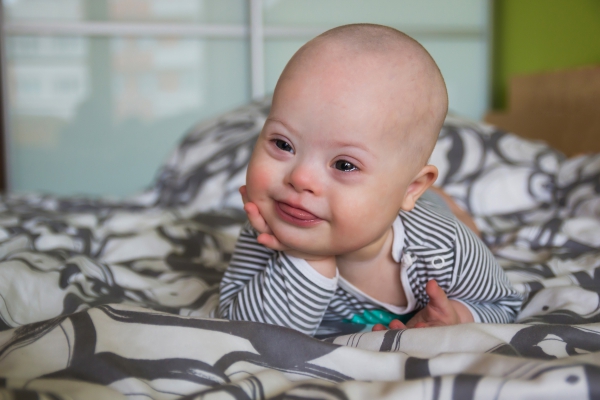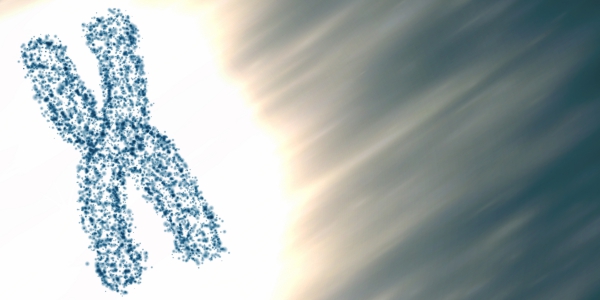Down syndrome, Genetic disorder, Chromosomal abnormality, Chromosome 21, Trisomy 21, Prenatal screening
Description : Down syndrome is the most common and well-known chromosomal abnormality among live born babies. The
Article Details :
What is Down syndrome?
Down syndrome is the most common and well-known chromosomal abnormality among live born babies. The chromosomes are thread-like structure that are located inside the cells of your body and contains genetic material and information. It encodes for specific instructions on how you look like and how your body functions, which makes you unique. A human being normally has 46 chromosomes, classified as 23 pairs. Each pair is given a number from 1 to 23. Those who have Down syndrome are born with 3 copies (instead of 2) of chromosome 21.
This genetic abnormality can result in various complications in the organ systems of the affected individual. However, the abnormalities vary from person to person. Down syndrome is also the most common cause of intellectual disability. Children with Down syndrome also have delays in development.
About 1 in 800 livebirths has Down syndrome. 6000 children are born with the condition each year. It also accounts for about a third of all mental handicaps in school-aged children. With time, the life expectancy of people with Down syndrome has increased. The incidence increases with increased maternal age.
What are the causes of Down syndrome?
Down syndrome is caused by an extra copy of the chromosome 21. This is also known as trisomy 21. Down syndrome is not inherited in most cases. It is due to abnormal cell division in the early stages of development of the foetus. The exact mechanism by which it happens is not very clear. However, it has been found to be associated with increased maternal age. Having a child with Down syndrome also increases the risk of having another child with the same condition.
What are the differences in appearance in Down syndrome?
People with Down syndrome usually have particular characteristics that distinguish them from other people.
Newborns
It may be difficult at birth to clearly make the difference. However, most newborns present with at least a few of the following:
- A flat appearing face
- Excess skin at the back of the neck
- Eyes slanting upwards
- Decreased muscular tone (Floppy baby)
- Abnormally flexible joints
- Ears looking abnormal
- A single crease across the palm known as a transverse palmar crease
Children and adults
With increasing age, children may develop the following characteristics:
- A flat head at the back
- Skin folds on the eyelids
- A flat nasal bridge
- Small or folded ears
- A gaping mouth
- Big-looking tongue protruding out of the mouth
- Abnormal teeth
- Broad and short hands

How is Down syndrome diagnosed?
In many cases, Down syndrome can be diagnosed prior to birth. During pregnancy, some abnormalities may be noticed on screening ultrasound. Special blood tests may also be performed during the prenatal screening for Down syndrome. These include:
- Serum alpha fetoprotein
- Human chorionic gonadotropin
- Unconjugated estriol
- Inhibin A levels
Most of the time, medical professionals make the diagnosis of Down syndrome based on the physical features and appearance. The diagnosis may then be confirmed by a blood test to have a look at the child’s chromosomes.
How is Down syndrome managed?
There is no specific treatment or cure for Down syndrome. If you have it, you have it for life. However, you should regularly be screened for any possible complications of the condition as treatment options are available for them. These treatments help in improving the quality of life of the affected person and they depend on each person’s individual needs.

What are the complications associated with Down syndrome?
A wide range of medical complications may arise in people with Down syndrome. Most of them have treatment available for them. These complications include:
- Heart defects: About half of all children with Down syndrome have heart defects, which are mostly repairable.
- Blood disorders: Some children may have a form of blood cancer known as leukaemia which is a blood cell abnormality.
- Immune system problem: In Down syndrome, the immune system, which is your body’s defence, may not function properly. This makes them more prone to infections and autoimmune diseases.
- Gastrointestinal tract problems: In some cases, abnormalities may arise in the digestive organs, resulting in obstruction often requiring surgery. They are also more likely to be gluten intolerant.
- Hormonal disorders: The body’s production of hormones may not function properly. This may include secretion of hormone from the thyroid or pancreas, resulting in hypothyroidism and diabetes respectively.
- Skeletal problems: In many cases, people with Down syndrome are found to be too flexible which may Read more





